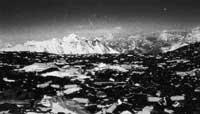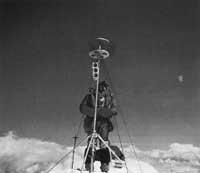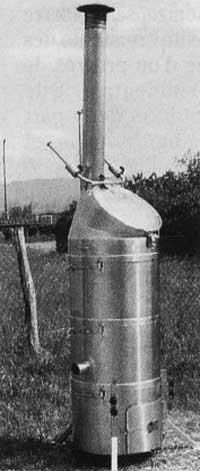Jeti, are you alive?
1991/10/01 Martinez Lizarduikoa, Alfontso Iturria: Elhuyar aldizkaria
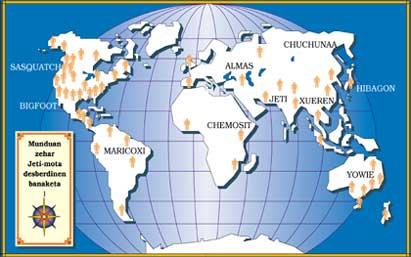
That is, the visit of naturalist William Knight to an expedition to Everest. These visits have been very numerous on different dates and places. All of them have fueled Jet's story. But what, scientifically, is hidden under this legend?
The telegram that worried Europe
We are in 1921. Colonel Howard-Bury is responsible for an expedition to Everest. As they climbed the mountain and were 6,000 meters high, at the Lhakpa La pass, they could see a line of footsteps. However, the most surprising thing about the event was to verify that they were footprints similar to those of humans. How to find the traces of humans at that point knowing that then there was no other expedition in the surroundings?
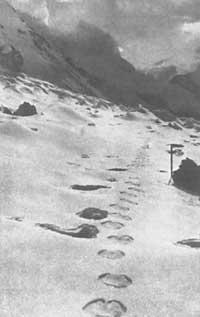
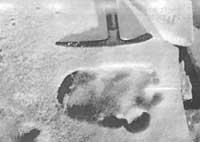
Xerpe immediately identified these strange traces and, undoubtedly, unanimously, declared that they were from Jet. Colonel Howard-Bury, as soon as he got off, sent the telegram in order to inform the discovery as soon as possible. It was dizziness! In the end, a European discovered the first evidence of the existence of Jet! From there reality and myth begin to go together. The firewood of the snow mammal was born.
But history only started, and in 1951 it was possible to perform one of the best tests achieved so far. Precisely on that date, Eric Shipton, Michael Ward and the famous xerpa San Tensing were looking for a new path to ascend to Everest, they found another line of treading on the glacier of Menlung. It had just made the row of footprints and, fortunately, by carrying them on the photo machine, they had the opportunity to make the most beautiful photos that have been obtained so far.
Of course, in those places there were no human beings either. Keep in mind that Eric Shipton and his friends were looking for a new and ancient way of ascent to Everest, specifically to the south. So the footsteps there were of animal origin. But everything. The feet had a length of 32 cm and a width of 16 cm. Irresistible consequences were awakened through the photographs. In those footprints, the thumbs were perfectly molded. And with them other fingers. But they were not, as was thought at first, shaped by a being, but by several. In Eric Shipton and the Xerpe, they were molded 25 minutes before those footsteps were seen.
The Shipton group followed the footsteps to disappear into the moraine at the bottom of the glacier. Xerpa Sen Tensing, a man as famous as prudent, excited, told Shipton that two years earlier he had seen a Jeti. Xerpa told him that the Jetia he had seen had the height of the human being, walked upright, had a hairless face and had a bad dotted and red hair.
Years later, famed mountaineer Hillary was able to see a legend she had heard of for a long time. According to this Nepalese account, in some monasteries of the monks there were a series of coats on the Jetes. Hillary organized a successful expedition, as she got a hair (full of redhead) and brought her to Europe for examination.
Jeti wood
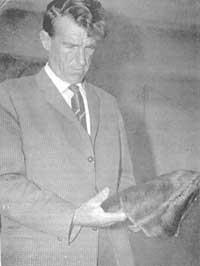
When they began to study scientifically the mystery of Jeti, they came to a very surprising conclusion. The legend of this animal is distributed all over the world.
Wild forest animals
They are well known in the folklore of northern Europe. In the English Middle Ages they were called woodhouses. In Canada we have bigfoot or sasquatch. In the area of China it seems that they are abundant, especially in the mountainous areas of the north. Pang Gensheng, a 33-year-old man in charge of a commune, presented in 1977 a very fruitful story. Pang pointed out that on Mount Taibai a large, hairy man approached him as he cut the trunk.
Horrified, he lifted the axe he was using to take care of himself. Then, that being stopped and for an hour remained looking face to face. Then, without fear, he took a stone and threw it. He touched in the center of the chest of the animal. He pulled out loud howls, rubbing the place beaten with the stone and moving away until his disappearance.
It was a creature more than two meters high and with black eyes very nailed to the ocules. With sharp jaw and wide front teeth. The hair was reddish (long to the shoulder) and the body was full of hairs. Her arms reached her knees and she stood up to walk, her legs wide apart.
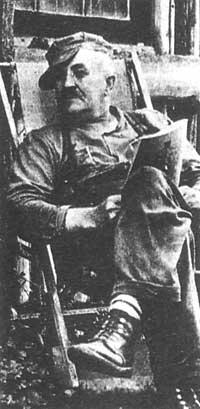
In the Soviet Union you can also hear such legends. In the mountains of the Caucasus they are called souls. In the summer of 1979 an expedition discovered great footprints. In Siberia they are called Chuchunaa. The data we have in Africa and South America is not complete, as large areas have not yet been explored. The so-called hibagons in the Japanese area, seen in 1970, Australia also has its own yowie, the unpopulated continent.
Descent of the Pyrenees
Yes! In the Pyrenees we have our Jetia, and it is no wonder that the cabin around this ghost is spread all over the world. Europe has long been a very civilized territory, meaning there are fewer and fewer wild places. The only remaining places are in mountainous areas. Of them are the Pyrenees. It is no coincidence that Jetia can be so close to Euskal Herria.
XIX. In the 19th century it was seen in the Catalan Pyrenees, but we have no scientific evidence. Everything we know today has been focused through tradition. In the stories still alive in the territories of the Ripolles and Cerdaña one speaks of the human being of the Pyrenean snows, according to which the Jetia of the Pyrenees could be extremely high and totally white.
Ripolles' folklore tells this story. Many years ago in this land lived a beautiful young woman named Nonell. For her beauty, all the girls fell in love. He walked as a girl, absorbing his charms. As a result, she was about to marry seven girls. Of course, she could not fulfill the promise and the girls began to die of love one by one. One day Nonell met the most beautiful girl ever seen and fell in love immediately. However, that charming girl laughs at the intentions expressed by Nonell and escaped the boy.
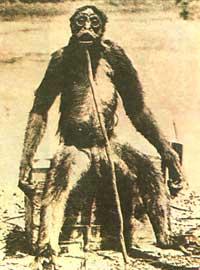
One day, as the girl escaped, Nonell decided to follow him. But she, step by step, moved away more and more from the boy. Nonelle then lies about walking so slow and asks the sky to be as light as the dog. Suddenly, the boy became a giant dog full of white hairs.
According to Leienda, Nonell appears every year with the first snow and fades making huge howls. The encounter with him is a bad sign and people escape. XX. In the nineteenth century we do not know that anyone has seen it, but the grandparents of these territories claim that in their youth had heard of Nonell de la neu (Nonell de la Nieves). As heard, Nonell lives in the summits of the Pyrenees, totally naked and covered with long white hairs.
Rocket Hunters
These animals of mythology have long been seen, therefore, in different areas of the Earth. They have been cared for by mythologies of different cultures and, of course, among human beings have emerged characters full of courage that have wanted to hunt these mythical creatures. Albert Ostman, a resident of British Columbia, is one of them.
This man, Jeti (from now on, even if not appropriate, we will use the word Jeti to collect all these myths in one word. However, keep in mind that the word Jeti is the word used in the area of Himalaia to express the human being of the snows) tells the most surprising discovery in history. While he was looking for that ghost in the mountainous area of Toba Inlet, which is in British Columbia, a tired night lying in his sleeping bag, a terrible being of 2.40 meters high caught him in hand, accused him and took him to a dark place after a three-hour trip that seemed unfinished. It was night and nothing looked good. But when morning came he was horrified to see that he was in the camp of a group of jetes.
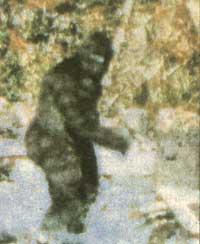
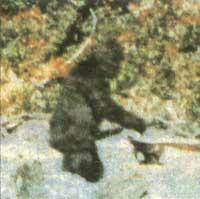
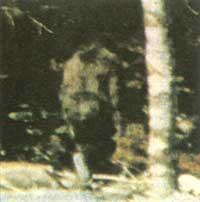
Ostman, very frightened, was able to verify that in the camp the male and the female lived with two children. During his captivity, he studied the customs of those animals and on several occasions tried to escape them, but in all of them the oldest descent prevented him. However, this group of jets gave him a good deal. One day Ostman realized that he had a little nose in his pants pockets and it occurred to him to give the old descent.
At first the animal was careful, then interested him, and in the end began to take his nose greedily to taste it. As a result, the animal was affected and had to leave the camp, probably drinking water. Then, as the other relatives were not in the vicinity, Ostman took the opportunity to escape. In total, one week was abducted by the jetes.
The hunter Ostman did not get any proof that the story of the situation was credible, but something else happened to the Californian Roger Patterson. Patterson, after descending with another friend, tried to photograph these mythological animals. The two, while Bluff Creek, from California, sailed through distant and dense forests, one day the horses became nervous and uncontrollable. In order to find out the cause of this behavior, they approached a stream that ran through the middle of the forest, where they managed to see a female of descent kneeling drinking water.
Patterson landed on the horse with a jump and without losing a second took the 16 mm camera and, nervous, began rolling as the race moved away aware that the jetes were the same. Before leaving the people completely, he returned to see them again. Then he disappeared. This film hit in 1967. It has been studied on numerous occasions and although some argue that the animal that appears there is a disguised man, its falsehood has not been fully demonstrated. Therefore, doubt continues.
What is Jetia?
The thesis that Jetia Gigantopithecus is a descendant of the giant monkey has sometimes been defended. The fossil remains of Gigantopithecus have been found in both India and China. This animal lived between 12 million and 500 thousand years ago. At that time the Himalaia mountain range began to ascend to 2,000-3,000 meters high thanks to tectonics. This made many species of animals isolated, including Jeti's ancestors.
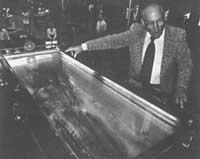
In the opinion of others, the fact that Jeti's firewood was so widespread could lead to finding different animals under the same word, all of them very similar to human beings. In 1917, Swiss geologist Francois de Loys killed a terrible animal on the border between Colombia and Venezuela. The origin of this descent is still discussed, but researchers believe it could be a kind of spider monkey.
Other researchers, although minority, have defended a truly emotional theory: that under the name of Jeti they would be prehistoric human beings who have managed to survive. Proponents of this theory were enthusiastic about the discovery that took place in Minnesota in 1968.
A mysterious ice man
Belgian zoologist Bernard Heuvelmans and Ivan T. The zoologist and writer Sanderson are the two main actors of this terrible mentality. On December 19, 1968, they received a call in their office in which it was mentioned that at a fair there was a hairy man who could have lost the level between monkeys and human beings. Sanderson and Heuvelmans immediately started behind the fairground and after visiting half of the continent, they finally managed to find Hansen, who was their name.
The territory was isolated and it was very cold in that red winter. At the back of the facade, parked, was a caravan with the written Ice room. Inside this caravan, as they could later see, a being was kept in an ice pit. This being had covered the whole body with long brown hairs.
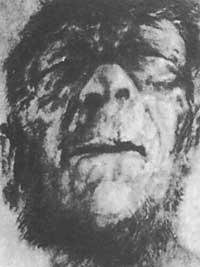
Although there was not much space in that trailer, Sanderson and Heuvelmans got to work for three days. Eleven images and photographs of the being were made. The being had no hair on the face and groin. The testicles appeared clear and the penis was exposed, claiming it was male. The left arm of the being tried to protect the face if it were in danger. He had his body mutilated. The broken arm, an empty eye, and the other eye removed from the hole hanging over the face.
He had his butt completely broken. It was clear that he had shot the creature and in the face of the attack the instinct to take care of himself ordered him to raise his arm. Both researchers were able to see the clean blood and the smell that caused the semicerated flesh of the body. He was undoubtedly a living being recently. But where does it come from?
The data provided by Hansen were incomplete and obscure. It seems that it was brought in the East and it seems that it was found floating in the sea inside an ice block.
Heuvelmans later studied the data and certainly, as in the case of humans, he could verify that he did not have the space between the thumb and the second finger. It was not, therefore, a kind of monkey. After analyzing the characteristics of the mind, he came to the exciting conclusion: being studied by science and more like the human being, Neanderthal. Therefore, that could be a similar species that lived before Neanderthal. Heuvelmans gave him the name Homo pongoides.
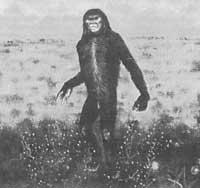
Heuvelmans recalled that in the North Basque Country some of the images of the cave of Isturitz appear, as well as one of the bones found in it, very curious figures. And among them, especially humans who look very much like being Neanderthal. So far it has been believed that modern man ended the Neanderthals and replaced them. Why not think that some Neanderthals were saved from that disaster and that they could reach our days through art, mythology and perhaps existence?
XXI. We are on the threshold of the 20th century, there is still room for imagination
Among the European caves appears a type of horse that, in our opinion, had long disappeared. Colonel Przhevalski, XIX. The famous 19th-century Mongolian explorer found his descendants alive in Mongolia itself. In memory of the discoverer, this kind of horse received its name.
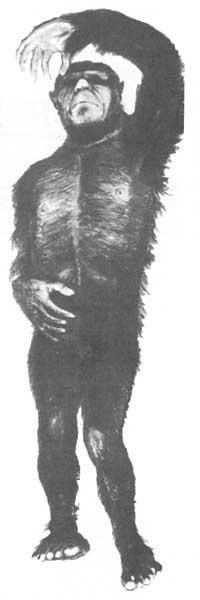
It is much more recent and emotional the case of celacanthus, which is located at a huge distance of time. This species was considered missing 400 million years ago. However, XX. It was found that in the first decades of the 20th century it was still alive, when a few were captured on the coasts of South Africa.
For today's scientists it is increasingly clear that we do not know everything on our Earth and that unexplored territories are very wide. Antarctica, Amazonian and African forests, Himalayan mountain ranges, extensive Siberian lands, etc. are just a witness to it. In those places we still have to know the incredible and incredible.
Why not accept that the legends and legends that are hidden under the word Jeti keep real and unknown information?
We do not know if the future will bring us anything new, but if under the legend of Kraken the giant chipirón was hidden, and under the monster of Loch Ness perhaps the plesiosaur is covered, why not think that there is something hidden under the Jet lions? However, it is gratifying to recognize and dream that we are immersed in the conquest of space on Earth we still have unsolved mysteries, because sleep is one of the most beloved needs for the human being.
In Basque mythology, Basajauna is a character similar to Jeti. Barandiaran describes him as a giant and strong human being. It seems to live in closed forests or high caves. Formerly, in storms people thought that Basajauna spoke of the needle. The giant body of Basajaun is completely covered with long hair. It has the face, chest and belly filled with hairstyles. One foot is like the human, but the other is circular. According to the stories of Euskal Herria, the Basajaun knew Nature very well and were very wise. Agriculture, mills, iron welding, saw, etc. that they themselves invented. According to Barandiarán, Basajauna is a benefactor who protects the flocks from wolves and offers his help to the shepherds in storms. According to Azkue, however, Basajaun also has a devil and you have to make hermitages to get rid of its damage and you have to say the litanies of Ascension. |

Gai honi buruzko eduki gehiago
Elhuyarrek garatutako teknologia




